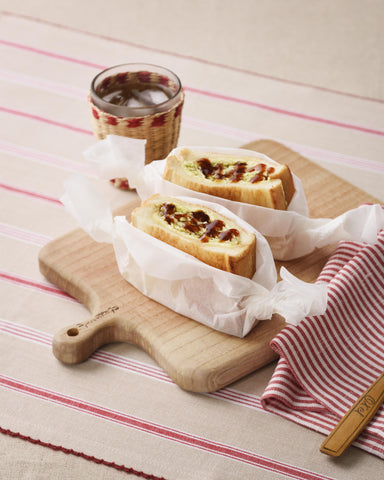Traditional Japanese food and Fusion Japanese food: Washoku and Yoshoku

What's your favorite Japanese food? Is it crispy katsu on top of a warm bowl of rice? Maybe it's a big bowl of silky curry with veggies. Or how about okonomiyaki straight off the grill? It might surprise you, but none of these are traditional Japanese dishes – these are what is known as yoshoku or “Western-style” foods that have been adapted to Japanese tastes.
But if these popular Japanese foods are “Western-style”, what is traditional Japanese cuisine?
Washoku
Washoku (translated to “food from Japan”) is as much a philosophy as it is a culinary tradition. Washoku places heavy emphasis on seasonal ingredients, balance with nature and gratitude for the people and things that made the meal possible. According to Tsukiji Cooking, washoku comes in many forms but its foundation is based on the principle of ichiju-sansai or “one soup, three dishes”. Rice, pickled veggies, a bowl of soup and three dishes which may contain veggies or fish are the basic form of washoku. The idea is that the dishes are chosen in harmony with nature and the body's nutritional needs.
You might notice that meat is missing from this description; meat was first banned in Japan in 675 A.D. due to the growing practice of Buddhism and remained off-limits with few exceptions until late in the 19th century. But even before this time, Japan had mostly relied on fish and veggies for its protein sources. Wild deer and boar were sometimes consumed but with precious little space on the island, Japan didn't actively engage in raising livestock for food as much as other nations did.
The term “washoku” came about in the late 19th century as a way to differentiate traditional Japanese cuisine from the dishes that were being introduced and influenced by outside nations. Since Japan had been virtually secluded from the rest of the world before this point, it had developed a distinct culinary tradition for itself. As foreign influences changed the landscape of Japanese food, care was taken to note which foods were influenced by the outside world and which were not.
Today, many types of washoku are found all over, from casual to extremely formal. Sushi, udon, tofu and tsukemono are all delicious examples of washoku. Kaiseki is an elevated form of washoku served at banquets and restaurants in a formal manner and can be quite expensive. Traditional kaiseki dishes are created with seasonal ingredients from the local area, so one restaurant's offerings might be quite different from another in a far-away region.
Alright, back to yoshoku.
Yoshoku

As we mentioned before, yoshoku has the connotation of food that is very much Japanese with varying levels of foreign influences, although not every food called "yoshoku" is inspired by the West; plenty of Chinese, Korean, Indian and other influences have inspired delicious examples of yoshoku. Yoshoku is probably best identified as “fusion” food. Ramen noodles, goyza, korokke and even tonkatsu are all examples of dishes that have been adapted from their original form to include Japanese ingredients, tastes and textures.
After the Meiji Restoration began in 1868, Japan experienced a surge of influence from other countries and along with their changing tastes, Japan's culinary traditions began to adapt as well. Favorites such as croquettes and cutlets began making their way to Japan, eventually transforming into korokke and katsu. Konamon, wheat flour-based foods, sprang up and became beloved dishes such as okonomiyaki and takoyaki.
You can find all kinds of yoshoku in Japan and all over the world, and the process of adaptation continues to expand; omurice, okonomiyaki and katsu sandwiches have become particularly popular as of late, and are being re-influenced by the culinary traditions they were originally inspired by, as well as the new cuisines that embrace them. You can now find Mexicoyaki with jalapenos, queso and cilantro, or bahn bao dipped in sushi sauce.
The concept of yoshoku and Japanese food around the world is constantly evolving and the results are both creative and delicious. With all this information in mind, we'll ask you to think about our question once again: what's your favorite Japanese food?
